Profile of facilities
RO Membrane System
RO membranes remove salt and ions from UF membrane-treated water and MBR-treated water, resulting in freshwater at almost the same level of quality as drinking water.
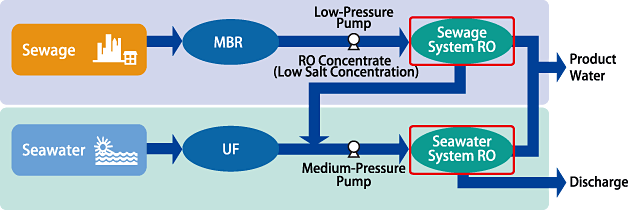 RO Membrane Element
RO Membrane Element
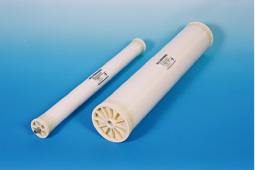 Functions of RO Membranes
Functions of RO Membranes
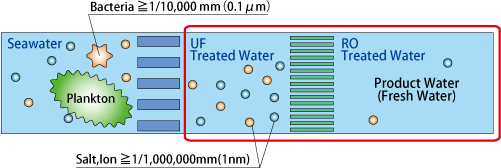 Structure of the RO Membrane Element
Structure of the RO Membrane Element
Our latest RO membranes, of which surface structure is manufactured with nanotechnology are adopted. Several elements are housed in a vessel (cylinder-shaped pressure-tolerant container) and fresh water at almost the same quality level as drinking water comes through the membrane driven by the high pressure pump.
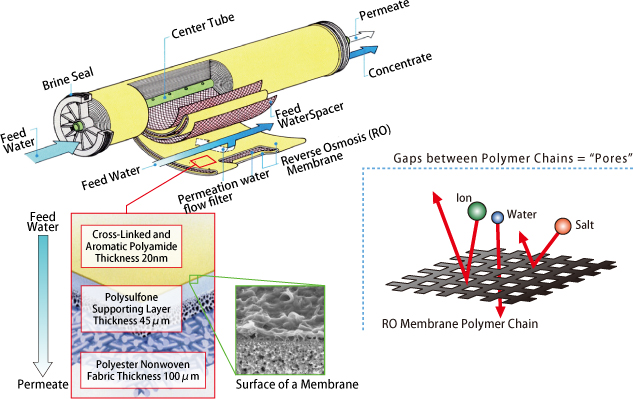 Features of Low-Pressure RO for Sewage
Features of Low-Pressure RO for Sewage
MBR pre-treated water still contains minerals and a trace of organic matter, which easily causes microbial growth. Cutting-edge low-fouling membranes are used for sewage treatment RO system with extremely low bacteria attachment. It will reduce a consumption of disinfectant and other chemicals, resulting in low operation cost and low environmental impacts.
Structure- 2-Stage RO
- 8-inch Vessels 6+3 (1 Vessel = 7 Elements)
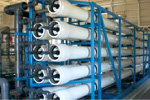
 Few microorganisms are attached to the membrane surface.
Few microorganisms are attached to the membrane surface.
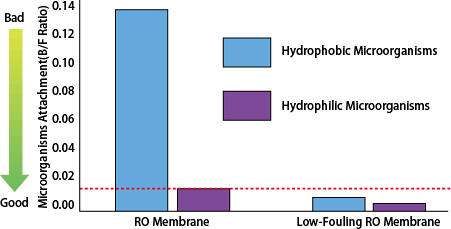 Medium-Pressure RO System for Seawater Desalination
Medium-Pressure RO System for Seawater Desalination
Diluting the seawater with sewage treatment RO concentrate, which is usually discarded, decreases its salt concentration and osmotic pressure. This reduces the electrical power required for the RO pump. An energy recovery device is also installed for further energy saving.
Structure- 2-Stage RO
- 16-inch Vessels 1+8-inch Vessel 3(1 Vessel = 6 Elements)
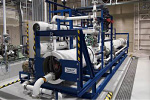
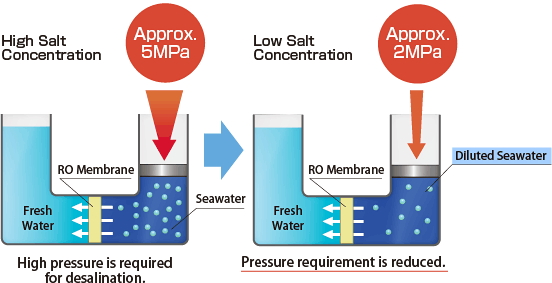 Large RO Elements Enable a Small Foot Print and Lower Cost
Large RO Elements Enable a Small Foot Print and Lower Cost
A single 16-inch RO membrane element, with membrane area equivalent to those of four 8-inch elements, makes the equipment structure simpler with reduced pipelines, thereby cutting down on construction cost.
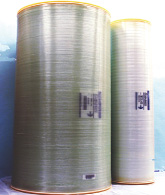
A 16-inch Element (Left) and
a Conventional 8-inch Element (Right)

